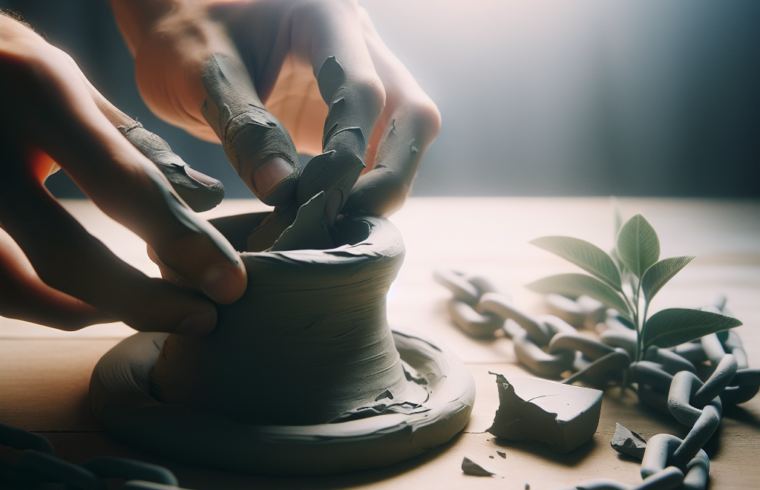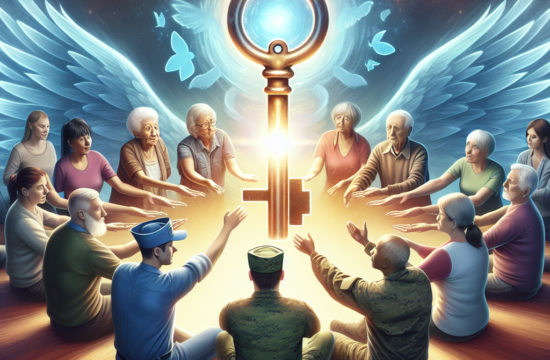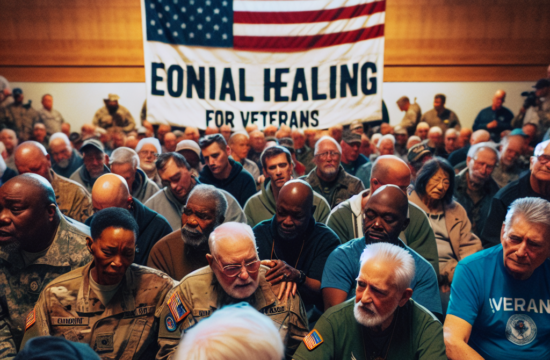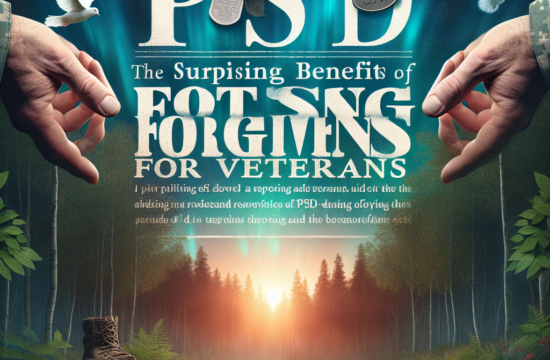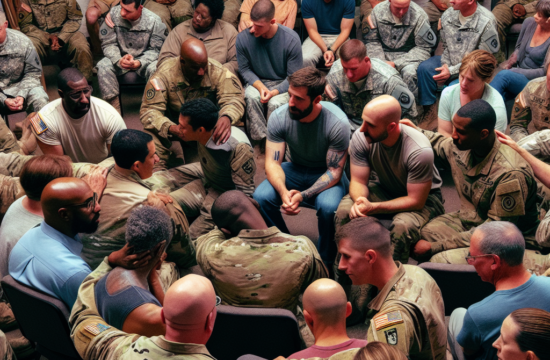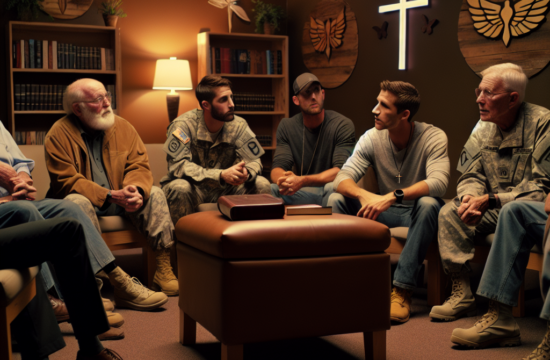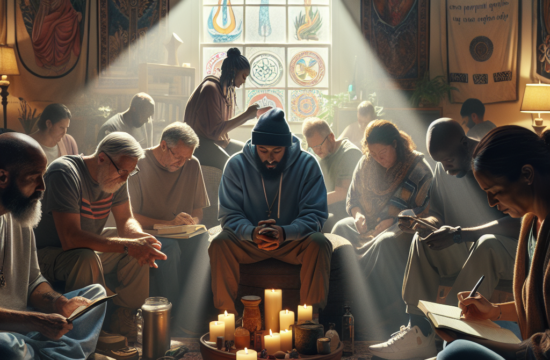==> Thank you for reading this post! Click Here If you are looking for support and Victory over PTSD.
Building a Support Network
Finding Your Tribe
Man, when I first started dealing with PTSD, I felt like I was on a deserted island. You know that feeling? It can be overwhelming to think you’re the only one grappling with your past. That’s why finding a supportive group is so crucial. There are organizations, local meet-ups, or online forums filled with people who really get it. Being part of these communities can make you feel less alone, and you’ll be surprised at how much you can learn from others’ experiences.
The best part about these groups is that they’re often led by folks who have walked the same path. Sharing stories, sobbing together, or even just laughing about the absurdities of healing can create a bond that feels incredibly comforting. Plus, it creates accountability; when you’re part of a group, you’re more likely to keep showing up for yourself and your healing journey.
Trust me, if I hadn’t reached out to find my tribe, I would still be drowning in my own thoughts. The strength that comes from simply being around people who understand your struggles can be a game-changer. So go on, seek out your community—you’ll be glad you did!
Therapeutic Relationships
In my experience, having a solid relationship with a therapist or counselor has been one of the best investments I could’ve made on my healing journey. It’s like having a personal coach for your mind! Choosing someone who you feel comfortable with is key; you need to trust them enough to peel back those layers and really explore the tough stuff.
In therapy, I learned to unpack my PTSD and even had the chance to practice different coping strategies. It’s not always easy to dive deep, but when you find the right fit, those sessions can become a safe haven where you can express yourself freely, without judgment. Over time, a skilled therapist can really help you shift your perspectives and empower you to take back control over your life.
So, if you’re still searching for someone to talk to, don’t settle. Shop around until you find a therapist who resonates with you. The healing process is truly a collaborative effort, and having that professional guidance makes a world of difference.
Family Support
Whew, this one can be tricky! Navigating family dynamics while healing from PTSD can feel like walking through a minefield. But having a supportive family can potentially accelerate your healing process. I’ve been fortunate to have some family members who are willing to learn and understand what I’ve gone through. It was pretty eye-opening to see how just a little knowledge could change the way they interacted with me.
If your family is willing to participate, consider involving them in sessions with your therapist or providing them with resources. Helping them understand what chronic stress responses can look like, or how to best support you during flashbacks, can foster a healthier family environment.
It’s not about forcing everyone to understand everything overnight, but small steps can help nurture a supportive atmosphere. Encourage open and honest conversations, and remember: patience is crucial. Healing takes time, and having someone there to lean on can make all the difference.
Practicing Mindfulness
Daily Meditation
Meditation has become my go-to daily ritual. It sounds kind of cliché, right? But hear me out! When I first started, it was rough. I would sit there thinking of a million things instead of calming my mind. Yet, the beauty of meditation is that it’s a practice; it gets better with time. Just five minutes each day can start to create a shift in how you approach your thoughts and emotions.
Incorporating meditation into my routine has helped me ground myself, especially during those tension-filled days. It serves as a mental break and allows me to observe my thoughts without judgment. Over time, I’ve built the ability to recognize when my PTSD symptoms flare up, and I can respond to them more mindfully instead of reacting with panic.
So, if you’re skeptical, just give it a shot! Explore different styles—guided, mantra-based, or even silent meditation—to see what resonates with you. Consistency is where the magic happens!
Breathing Techniques
Let’s take a moment to talk about breathing—yes, good ole’ breathing! I know it sounds basic, but trust me, it’s powerful. When I feel the heat rising and my chest tightening, I whip out some breathing techniques that ground me right back into my body. Have you ever tried box breathing? It’s a lifesaver! You inhale for four counts, hold for four, exhale for four, and hold again for four. Rinse and repeat!
This method has helped me remain calm in the midst of chaos. It’s amazing how something so simple can really pull you back into the present. Plus, you can do it anywhere! Whether at home, work, or even in a crowded coffee shop, nobody will even notice you’re collecting yourself. It’s just you and your breath, and that’s a beautiful thing.
I encourage you to explore different breathing exercises. They can be engaging and incredibly beneficial. So, take a deep breath, will you? You’ve got this!
Body Awareness
Learning to listen to my body has been a huge part of my healing. Our bodies often hold onto stress and trauma, sometimes more than our minds do! When I started focusing on body awareness, it opened up a whole new world of understanding my PTSD symptoms. Practices like yoga or simple stretches can connect the mind and body, helping release pent-up emotions.
I found it eye-opening to check in with myself throughout the day. Instead of simply pushing through, I’d pause and ask, “What does my body need right now?” It could be as simple as stretching my arms or even just shaking my legs to let off steam. These small actions can lead to significant shifts in how we process and cope with emotions.
So go ahead—hit pause on your busy day and do a quick body scan. Tune in to what you’re feeling inside. Recognizing when you’re tense or anxious can allow you to integrate these practices naturally into your life.
Engaging in Physical Activity
Finding Your Favorite Exercise
Let’s get moving! One of my biggest breakthroughs in managing my PTSD was incorporating exercise into my weekly routine. You don’t need to be a gym rat or go hardcore CrossFit. Just find what feels good for you—whether it’s dancing, hiking, or good old-fashioned walking.
For me, there’s something therapeutic about breaking a sweat. It not only boosts your endorphins, but it can also help clear your mind and serve as a great distraction from racing thoughts. I noticed that the more I engaged in activities I enjoyed, the better my mood! Plus, it encourages a sense of accomplishment, which is so vital on tough days.
So, crank up your favorite tunes, lace up those sneakers, and give yourself permission to enjoy movement. Your mind and body will thank you for it!
Get Support and Help with Recovery! Visit us for more Information and Support
Outdoor Time
Let’s take this outside! Nature has always been a soothing presence for many, and I can’t stress enough how beneficial just being outdoors can be. Whether it’s a walk in the park, a hike in the mountains, or simply sitting on a bench soaking in the sun, those moments of connection with nature can help ground us.
I often discover that when I’m breathing in the fresh air, I can release some of the tension built up within me. There’s so much beauty in the world around us, but when you’re wrapped up in stress and anxiety, it’s easy to forget that. Intentionally dedicating time to be outdoors reminds me to pause and appreciate the little joys.
So grab a friend, bring a book, or even go solo. Just make it a point to step outside regularly. I promise it can do wonders for your mental health!
Structured Routine
Creating and sticking to a structured routine was key for my healing. It might sound boring, but hear me out! Having a routine provides a sense of normalcy and can keep the chaos at bay. I found that by dedicating specific times for exercise, work, relaxation, and social interaction, I began to feel more grounded.
Routines can also present opportunities for self-care that might otherwise fall off the radar. Block out time to explore hobbies, connect with loved ones, or simply wind down with a good book. These moments help create a balance that can minimize the emotional rollercoaster PTSD often brings.
As weird as it sounds, knowing what to expect can be a comfort. So, sit down and map out your days! You’ll find structure has a beautiful way of turning the overwhelming into the manageable.
Continuous Learning
Educating Yourself About PTSD
This might sound a bit cheesy, but knowledge truly is power. Before diving into my healing, I had zero understanding of what PTSD was. I mean, I’d heard the term but had no clue about the intricacies involved. After doing some research and reading books, I gained insights that helped me realize I wasn’t alone in my experiences.
Understanding the science behind PTSD has brought so much clarity. Getting to know the symptoms, triggers, and coping mechanisms can empower you to make conscious choices for your healing. Plus, having knowledge equips you to explain what you’re experiencing to loved ones—helping them support you better in the process.
So, make it a goal to learn something new each week! Whether it’s through podcasts, articles, or books, delve into materials that can broaden your understanding and light your path.
Workshops and Retreats
Okay, I know this sounds like a lot, but attending workshops or retreats can have a transformative effect. When I decided to invest in attending one, it felt a bit out of my comfort zone, but man, was it worth it! It offered a deep dive into healing practices, mindfulness, and self-growth—all while connecting with others on the same journey.
Being surrounded by like-minded individuals helped me feel less isolated. Plus, the facilitators often share valuable techniques and insights that I’ve kept in my toolkit. If you’re curious about how to approach the world of healing, workshops can provide that much-needed guidance and structure.
If you’re hesitant about diving into a workshop, look for short events or webinars that won’t put pressure on your financial situation. The connections and insights gained can be pivotal in your journey toward recovery.
Continued Professional Support
Never underestimate the value of continued professional help. Healing from PTSD isn’t always linear; sometimes, it feels like two steps forward and three steps back. Having professionals—therapists, counselors, or coaches—who can guide you through these fluctuations can make a world of difference. They can provide strategies tailored specifically for those tumultuous moments and are trained to steer you in the right direction as you navigate your journey.
Check in periodically with your counselor or support group, especially during challenging times. Regular sessions can help you stay grounded and keep your mental toolbox well-stocked. Sharing your path with someone equipped to navigate those ups and downs can be incredibly reassuring.
So, if you find yourself pulling away from professional help, remember that it can be a lifeline on days when the weight of the world feels too heavy. Reach out and keep that connection alive; your future self will thank you!
FAQs
What are the main strategies for healing from PTSD?
The main strategies include building a support network, practicing mindfulness, engaging in physical activity, and continuous learning. Each of these areas encompasses various techniques and practices that can help in the healing process.
How can mindfulness help with PTSD?
Mindfulness helps you stay present and connected to your body. By practicing mindfulness techniques like meditation or breathing exercises, you can manage stress responses, reduce anxiety, and improve emotional regulation, making it easier to cope with PTSD symptoms.
Why is a support network important for healing from PTSD?
A support network helps combat feelings of isolation often felt by those with PTSD. Connecting with others who understand your experiences can foster a sense of belonging, accountability, and encouragement on your healing journey.
What role does physical activity play in healing from PTSD?
Physical activity releases endorphins, which can boost mood and mitigate symptoms of anxiety and depression. Engaging in regular exercise is a great distraction technique that promotes self-care and can greatly improve mental health overall.
Can I heal from PTSD on my own?
While some individuals may find healing through personal strategies and self-help, PTSD can be complex, and having professional support greatly enhances the healing process. Community and professional guidance can provide necessary encouragement and accountability.

